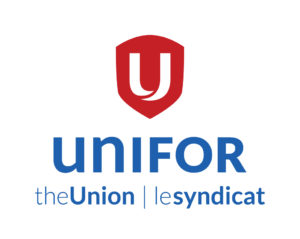
As a means of reskilling Canada’s workforce, are microcredentials a boon—or just hype?
Brave New Work Case StudyIssues in Action
This case study illustrates the topics in Harvey Weingarten’s report on Improving the Linkages between Universities and Workplaces
As Canada prepares for the post-pandemic economic recovery, governments and post-secondary institutions are increasingly introducing microcredentials—short programs designed to help adult learners rapidly upgrade their skills—as a means of retraining particular groups of people that have lost jobs.
Numerous provinces are now funding microcredential programs at colleges and universities. In its 2020 budget the Ontario government pledged nearly $60 million over three years to support the development of microcredential programs. It also expanded coverage of the Ontario Student Assistance Program to include roughly 600 microcredential programs, making it the first province to do so, and its 2021 budget it provided an additional $2 million for the development of a “virtual skills passport” to digitally track learners’ credentials and share them with prospective employers.
The British Columbia government has invested $4 million to fund 24 microcredentials in high-demand occupations. Courses offered include Digital Marketing Skills and Skills in Blockchain Foundations and Applications. Alberta’s Bow Valley College has partnered with IBM to create the country’s first IBM Skills Academy to offer short technical certification programs for careers in the IT industry. Quebec and Saskatchewan are also funding microcredential programs at post-secondary institutions.
Even before the pandemic struck, the labour force was undergoing structural changes. A June 2020 Business Council of Alberta report sounded a familiar refrain among business groups. The report noted that while the province was experiencing historic levels of unemployment, especially among young people, thousands of jobs were unfilled because employers could not find people with the required skills. To help solve the problem, the Business Council of Alberta called for the Alberta government and post-secondary institutions to break down existing degree and diploma programs into smaller programs, or microcredentials. “Microcredentials are essentially a way to modernize education,” the report says.
A June 2020 Business Council of Alberta report noted that while the province was experiencing historic levels of unemployment, especially among young people, thousands of jobs were unfilled because employers could not find people with the required skills.
According to Ryan Craig, author and co-founder of University Ventures, a U.S. investment firm, microcredentials could serve as “last-mile training” to address the missing link between post-secondary education and the skills that employers seek in new hires.
“It’s not clear what the pathways are to these good jobs for new entrants into the labour market as well as older workers who may be displaced out of old-line sectors of the economy,” he says.
While colleges and universities do a good job teaching critical thinking and other foundational skills essential for students’ long-term success, they aren’t as adept at preparing students for their first job, Craig argues. At the same time, employers are increasingly looking for “the perfect candidate to be served up on a silver platter,” even for entry-level positions. Craig believes new intermediaries are needed to provide this training.
“It’s time we changed our business model”
It’s not just the labour market that’s in flux; learner needs have evolved too, says Robert Luke, chief executive at eCampusOntario, a provincially funded agency that has piloted more than 30 microcredential programs. According to Luke, the notion of a traditional learner as someone who graduates from high school, gets a degree or a diploma and then enters into the workforce is outdated. “Education is ongoing and iterative throughout our lives. How is it that we still offer the same product and service to a market that has fundamentally shifted? Maybe it’s time we changed our business model.”
Luke likens the need for microcredentials to the forces that have reshaped the music industry. Listeners are today more likely to stream songs than purchase an entire album. “We are in a similar moment of disruption in postsecondary education,” he says, where skills and competencies are becoming disaggregated from traditional diplomas and degrees.
For many years, the multi-year foundational education provided by colleges and universities was the only option for students, notes André Côté, a public affairs consultant and a former senior adviser to the Ontario government. Today there is a “pushback against the rigidity of that model of education,” which won’t sustain workers throughout the duration of their careers.
“We’ll have to refine our skills along the way, which will require short bursts of education and training,” says Côté—short bursts of education such as those to attain microcredentials.
Colleges and universities have long offered programs geared to adults, typically through their continuing education departments. Governments do not fund these programs, either directly or through financial aid programs; students must pay the entire cost out of pocket. Microcredentials mark a departure from this. Governments are now making funds available for short programs with a strong focus on skills and competencies.
Denise Amyot, president and chief executive of Colleges and Institutes Canada, says a recent survey of the association’s members found that 89 percent of respondents were ready to launch or were already offering microcredential programs. But greater flexibility in government funding will be required to support their continued growth. She notes, for example, that microcredentials aren’t covered under the federal Canada Student Loans Program. “For me that’s an issue,” she says.
Post-secondary institutions have also expressed concern that without common standards to regulate the burgeoning microcredential field, an influx of providers could offer credentials of dubious quality. The COVID-19 pandemic has highlighted a need for quick and inexpensive ways to retrain those who have been displaced, says Sarah Watts-Rynard, chief executive of Polytechnics Canada. But she says these programs must be more than just “fast and cheap.” They should have a digital footprint that validates and articulates a learner’s skills. They should indicate what skills are taught, how they are taught and how they are assessed in order to show employers what the student has learned and can do.
Watts-Rynard notes the pandemic has disproportionately affected lower-income, marginalized workers in precarious positions. “I have a real problem with taking learners who are already disadvantaged in the labour market and getting them to buy in to this training if employers don’t see them as valuable. That’s a serious concern.”
Roadblocks remain
Robust data of whether microcredentials are leading to better employment outcomes doesn’t yet exist, but will be essential to making informed policy decisions in the future. eCampusOntario’s Robert Luke says the organization has heard from both employers and learners that microcredentials are “useful and useable,” but he acknowledges this is largely based on anecdotal evidence collected from a small number of pilot programs with limited enrolment.
A report by eCampusOntario, the Future Skills Centre and Ryerson University argues that microcredentials augment the value of traditional diplomas and degrees, offer a path into education and training for those without formal credentials, promote lifelong learning and build bridges into the workforce. Still, the report acknowledges that a lack of a clear definition and standards for microcredentialing could hamper implementation.
André Côté notes that in Canada, various organizations and governments have introduced frameworks and definitions, while the Organization for Economic Co-operation and Development and other international organizations have their own. Robust industry-validation and quality-assurance processes will be necessary to ensure that microcredentials will lead to job opportunities, he adds. And learners will need support as they navigate an increasingly complex landscape of training opportunities.
“Robust industry-validation and quality-assurance processes will be necessary to ensure that microcredentials will lead to job opportunities.” – André Coté
Canada remains far behind the U.S., where public, private and non-profit educational institutions provide a wide array of programs, from massive open online course (MOOC) providers such as Coursera to coding bootcamps to more traditional postsecondary institutions. Côté acknowledges that there are unique factors driving change south of the border, such as the exorbitant cost of post-secondary education, as well as a more entrepreneurial mindset and a willingness to embrace experimentation. However, the U.S. experience offers lessons for Canadian post-secondary institutions. Southern New Hampshire University, for example, was at one time a small liberal arts institution struggling with declining enrolment and fiscal woes. It fundamentally redesigned its business model to become a primarily online institution that caters to the needs of working adults, and now has 135,000 students.
To be sure, “microcredentials are not the be all and end all. There’s overhype in the market,” says Côté. Microcredentials are unlikely to displace traditional diplomas and degrees any time soon. Yet many learners’ needs aren’t currently being met.
“There has to be a whole spectrum of training and retraining opportunities,” Côté says. “Microcredentials are one part of that spectrum.”
Thank you to our partners
Thank you to our lead sponsor

Thank you to our partners
 |
 |
 |
 |
 |
 |
 |
 |
 |





